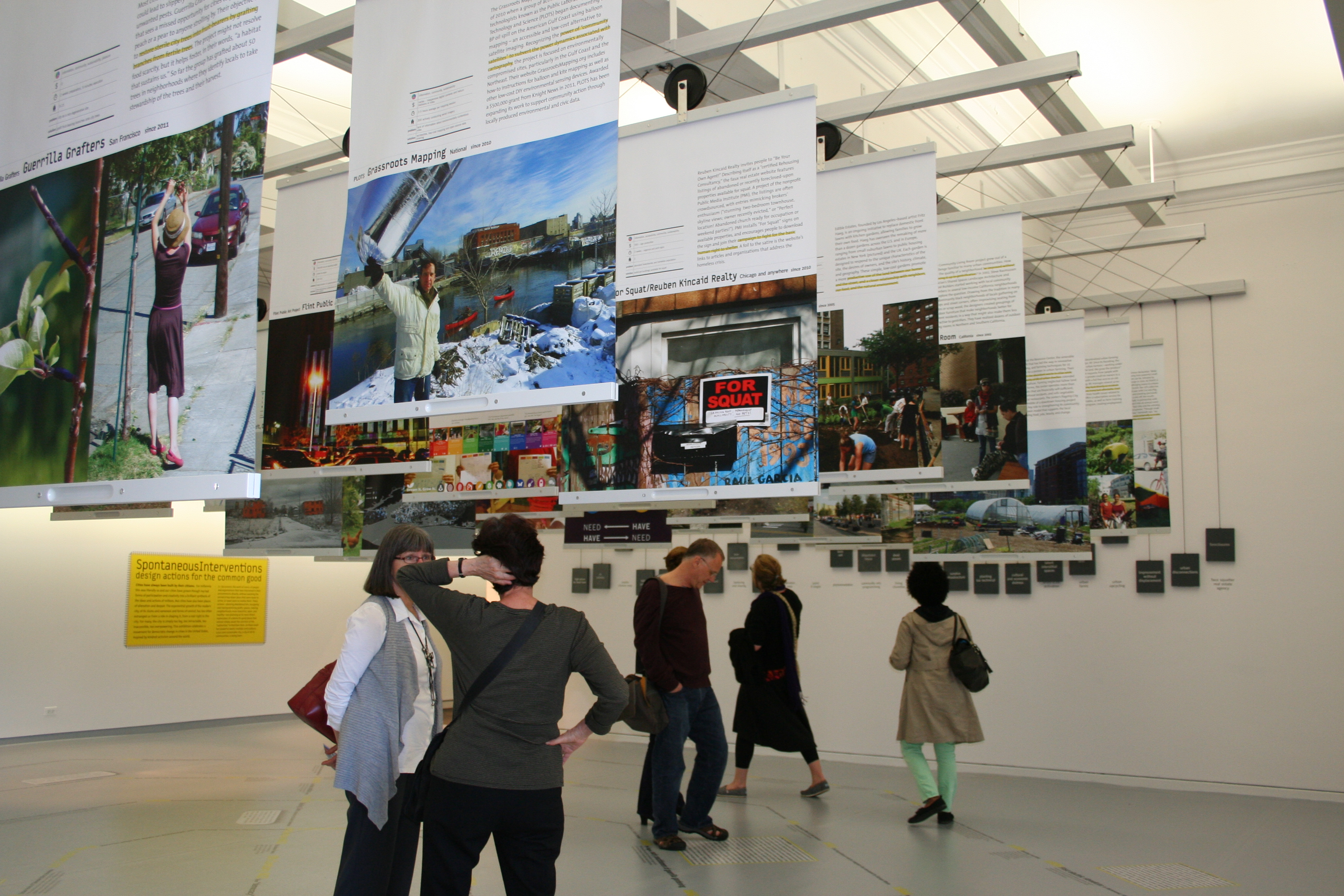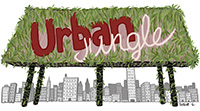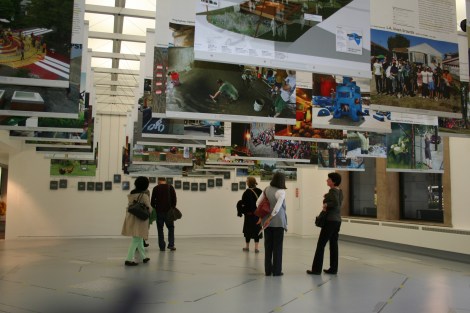
Spontaneous Interventions
Remember when DIY urbanism was verboten? When seed bombing, farming on vacant lots, and squatting in empty buildings were frowned upon if not outright illegal? Those days are apparently over. Instead, these guerrilla tactics have become symbols of American ingenuity and the rebirth of urban cool.
That’s the take-home message from a new exhibition called “Spontaneous Interventions: Design Actions for the Common Good,” which was funded in part by the U.S. State Department. The show, which first appeared at last summer’s Venice Architectural Biennale, not only encourages these guerrilla tactics — it co-opts them by turning them into art.
And if that sounds a little weird, well, it is.
The exhibition, which opened late-May in Chicago and runs through September, celebrates DIY urbanism as a design movement. It sprawls across three galleries in the Chicago Cultural Center. Want to learn more about chair bombing in Brooklyn or a crowd-built St. Louis skate park? They’re collected on posters that pull down from the ceiling like old-fashioned window shades.
If you can get used to calling these projects “interventions” (which gives the impression, perhaps correct, that DIY is some kind of gateway drug), there are interventions here that are clever if not genius, like a faux real-estate agency serving the needs of Chicago’s squatters by advertising prime empty property. One promising listing: “ABANDONED CHURCH READY FOR OCCUPATION OR WEEKEND PARTIES. (Neighbors religious).”
Unfortunately, the “agency” closed soon after it opened, something the exhibition does not explain. Like many of the interventions in the exhibit, it existed only as art.
One sublimely practical intervention that’s going strong is 596 Acres, an organizing platform born in Brooklyn. To date, 596 Acres has helped turn 14 prime pieces of public land into gardens, outdoor classrooms, and more, and it’s working on 101 additional lots throughout New York City. It’s also metastasized to Philadelphia, L.A., and New Orleans, and is developing an online platform that will work anywhere.

596 Acres at a Brooklyn site.
Here and there, a familiar design-will-save-the-world mania creeps into the exhibition. On the walls are tiles describing common urban problems. Lift the tile and find a simplistic “solution.”
Problem: “Decline in reading.” Solution? “Open-air learning lounge.”
Problem: “Missed urban possibilities.” Solution? “Public brainstorm.”
Then there are the projects that stray into the absurd, like dumpsters converted to swimming pools. Seriously, who wants to swim in a dumpster?
But the weird dissonance really sets in when you see the poster about Occupy Wall Street — the ultimate show of popular force against The Man. Yes, amazing things were constructed in Zuccotti Park, like a pop-up library and shelters made of bubble-wrap. But to shrink the whole occupation to a poster — one that does not mention banks — and display it in a city-run art gallery seems like the very kind of commodification that Occupy attacked with such verve.
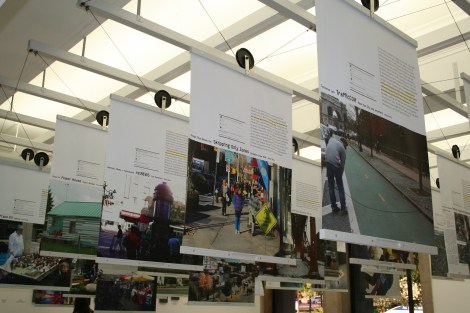
Spontaneous Interventions
Or in the words of a skittish college student who didn’t want his name in print: “It’s great to learn about these projects, but it’s odd that the city is affirming interventions — political interventions.”
Maybe this kid was being paranoid. On the other hand, there are cameras in the exhibition, looking at you while you look at it.
The exhibition was developed by the nonprofit Institute for Urban Design and funded by foundations and corporate gifts, in addition to roughly $100,000 from the State Department. It is interesting to think about the exhibition as a federally subsidized campaign to market the U.S.A., as if to say, “Ah yes, America has hundreds of thousands of ugly empty lots — but look at the funky homemade chairs we put in one for a week!”
Its official sanction puzzled more than a few viewers. Sure, participatory democracy is great — but does this mean that city halls like Chicago’s now support chair bombing and squatting?
“The government has all the resources, but these project are being done by people on their own,” said an exhibition-goer named David Assassaki, who works as a janitor in a famous Chicago skyscraper. “The exhibition gives you hope and makes you sad at the same time because of that disconnect.”
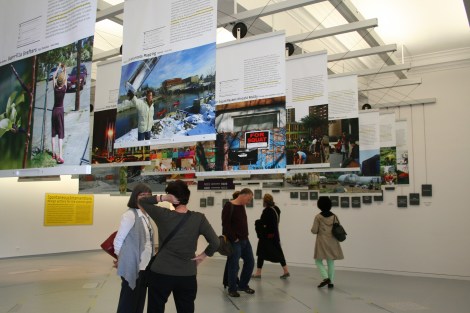
Spontaneous Interventions
There also seems to be a gulf between the exhibition’s organizers and the DIYers. For one, some of the interventions were presented incorrectly or incompletely. None of the info about 596 Acres’s success and growth was mentioned — which is critical, because it shows the organization’s model seems to work. Viewers deserve to know that.
And therein lies perhaps the exhibition’s greatest failure: It sets up all interventions as equal. Occupy Wall Street is right up there with the street furniture and parklets.
The great accomplishment of “Spontaneous Interventions” is that it shows that the U.S. has embraced this kind of grassroots, design-driven activism. But do we really need more citizens to take it up, as the exhibition encourages? Building affordable housing and better public transit seem like far more urgent priorities, given the massive problems of poverty, drug abuse, obesity, and the looming threat of climate change — plus the key role cities must play in creating dense, resilient communities.
Then again, perhaps DIY really is a gateway drug. Maybe chair bombing and dumpster pools will catalyze people to grapple with more pressing issues. We can always hope.

